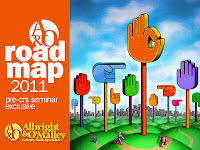Actually, it was one of the best - at least when talking about year-end test scores.
Across our metrics, nearly all scores were better than 2010’s and some were the best since Albright and O’Malley began year-end analyses in 1998.
Songs in the top third of course score better in all metrics than those in the bottom two thirds. This year though the Total Positive gap narrowed significantly. Not only were the Total Positive scores better for the top tier (the best since 2001), the scores for all songs were the best since our first year of tracking this in 2000.
Second-tier songs definitely had softer Like-A-Lot scores but many had very strong Total Positive scores. In aggregate these are the best Total Positive scores since we began tracking them in 2000 – good news for stations needing Millennial Variety.
Artists with top testing songs looked like the winners’ list at a 2011 awards show with Millennial Artists dominating the top 1/3. 70% of A&O’s top third were from mid/late Millennial Artists with Blake Shelton and Jason Aldean each placing three songs inside our top 1/3.
2011 also saw the most number of different artists place songs in the top 1/3.
Despite the prominence of Millennial Artists it continues to be difficult for new artists to break into the top 1/3. In 2011 only two new artists (previously without a significant chart position) cracked the top 1/3: Thompson Square and Brantley Gilbert. 2007 was the last year new artists made up a significant percent (20%) of the artists in the top 1/3.
While the footprint of Historical Superstars is smaller by comparison and none had songs in the top 10, Kenny Chesney, Toby Keith, Reba and George Strait all had music in the top 1/3.
If you’ve followed Albright & O’Malley's Roadmap data and blogs over the years, you’re not especially surprised. Earlier this year I blogged that the 2011 Roadmap showed that Top Millennial Artists are scoring well across the board but that listener passion is still very high for millennial music from pre-millennial artists like Tim McGraw, Kenny Chesney, Toby Keith and Alan Jackson.
Last year's Research Director Inc/Inside Radio study showed how a wide a demographic swath country cuts attracting roughly equal cume ratings 18-34 (16.6), 18-49 (16.5) and 25-54 (16.4). The broad strength of 2011’s currents is great news for a format where the cume ratings are nearly identical across 35 years.
While a stations will have differing strategies for this year's music, the good news of 2011 is that the benefit of a year of strong currents is not just immediate. Many will continue to live lives in recurrent and gold categories that can be leaned upon during times when the currents aren’t.






















